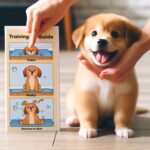Key Takeaways:
- Environmental Benefits: Why choosing eco-friendly toys is better for the planet.
- Healthier Options: How sustainable toys can be safer for your child.
- Choosing the Best: Tips for selecting the right eco-friendly toys for your family.
In a world where environmental concerns are becoming increasingly important, making sustainable choices for our children can feel like a natural extension of our parenting values. Eco-friendly toys offer a wonderful way to merge fun and sustainability, providing your little ones with safe, imaginative playthings while reducing your family’s carbon footprint. Let’s dive into why eco-friendly toys are a great choice and how to find the best ones for your child.
Why Opt for Eco-Friendly Toys?
Eco-friendly toys are not just a trend; they represent a thoughtful approach to parenting that considers both your child’s health and the environment. Here’s why making the switch is worth it:
1. Better for the Environment
Traditional toys often come with a hefty environmental cost. They are frequently made from plastic and other non-biodegradable materials that can take hundreds of years to decompose. Eco-friendly toys, on the other hand, are made from sustainable materials like bamboo, recycled wood, or organic cotton. These toys help reduce waste and minimize pollution.
Example: A toy made from recycled wood helps reduce the need for new resources and keeps waste out of landfills.
2. Healthier for Your Child
Many conventional toys contain harmful chemicals such as phthalates, lead, or other toxins that can be harmful when ingested or when they come into contact with the skin. Eco-friendly toys are typically made from non-toxic, natural materials that are safer for children. This is particularly important since babies and toddlers often put toys in their mouths.
Example: Organic cotton stuffed animals are free from pesticides and chemicals, making them a safer choice for babies who love to chew on their toys.
3. Supports Ethical Practices
Eco-friendly toys often come from companies that prioritize ethical manufacturing practices. This means that the workers involved in creating these toys are likely to be treated fairly, and the production processes are designed to minimize harm to the environment.
Example: Many eco-friendly toy manufacturers are committed to fair trade practices, ensuring that their products are made with respect for both people and the planet.
How to Choose the Best Eco-Friendly Toys
Selecting the right eco-friendly toys can be as straightforward as it is rewarding. Here are some tips to help you make the best choice:
1. Look for Certifications
When shopping for eco-friendly toys, check for certifications that indicate a product’s sustainability. Certifications like “Certified Organic,” “Made from Recycled Materials,” or “BPA-Free” are good indicators of a toy’s environmental friendliness.
Example: Toys labeled with the “Global Organic Textile Standard” (GOTS) are made from organic fibers and are produced without harmful chemicals.
2. Choose Natural Materials
Opt for toys made from natural, renewable resources such as wood, bamboo, or organic cotton. These materials are not only better for the environment but also more durable, meaning the toys are likely to last longer.
Example: A wooden puzzle made from sustainably harvested timber is both durable and environmentally friendly, offering educational value as well.
3. Consider Recycled and Upcycled Products
Toys made from recycled materials, such as plastic bottles or old tires, help reduce waste and make good use of materials that would otherwise end up in a landfill. Upcycled toys, created from repurposed materials, are another excellent choice.
Example: A set of building blocks made from recycled ocean plastics helps clean up marine waste while providing a fun, safe toy for your child.
4. Avoid Toys with Excessive Packaging
Eco-friendly toys often come with minimal or no packaging, which helps reduce waste. Look for brands that use recyclable or biodegradable packaging.
Example: A toy car wrapped in recycled paper rather than plastic is a small but impactful choice for reducing environmental waste.
5. Prioritize Quality Over Quantity
Instead of buying many toys, focus on selecting a few high-quality, eco-friendly options. Quality toys tend to be more engaging and can be passed down to siblings or friends, extending their life and reducing waste.
Example: A well-crafted wooden train set can provide years of enjoyment and is likely to be passed down through generations.
Tips for Introducing Eco-Friendly Toys to Your Kids
1. Make Learning Fun
Introduce your children to eco-friendly toys as part of a fun learning experience. Teach them about the environment and why it’s important to make sustainable choices. Children are more likely to appreciate and care for their toys when they understand the positive impact they have.
Example: Read a story about recycling or nature conservation and then give your child a toy made from recycled materials to reinforce the lesson.
2. Involve Your Child in the Selection Process
Let your child help choose eco-friendly toys. Involving them in the process can make them more excited about their new toys and more aware of the importance of sustainability.
Example: Take your child to a store that specializes in eco-friendly products and let them pick out a toy they like from a selection of sustainable options.
3. Be a Role Model
Show your child that you care about the environment by making eco-friendly choices in other areas of your life. Children often mimic their parents, so your commitment to sustainability will likely influence their attitudes and behaviors.
Example: Use reusable shopping bags, reduce your energy consumption, and make other eco-friendly choices to reinforce the values you’re teaching through their toys.
Conclusion
Eco-friendly toys are more than just a parenting trend; they’re a commitment to a healthier planet and a safer environment for your child. By choosing toys made from sustainable materials, free from harmful chemicals, and produced ethically, you’re not only providing your child with safe and engaging playthings but also contributing to a better future for everyone.
Embrace the opportunity to make a positive impact through your choices. With a bit of knowledge and some careful selection, you can ensure that your child’s playtime is both fun and eco-friendly.













